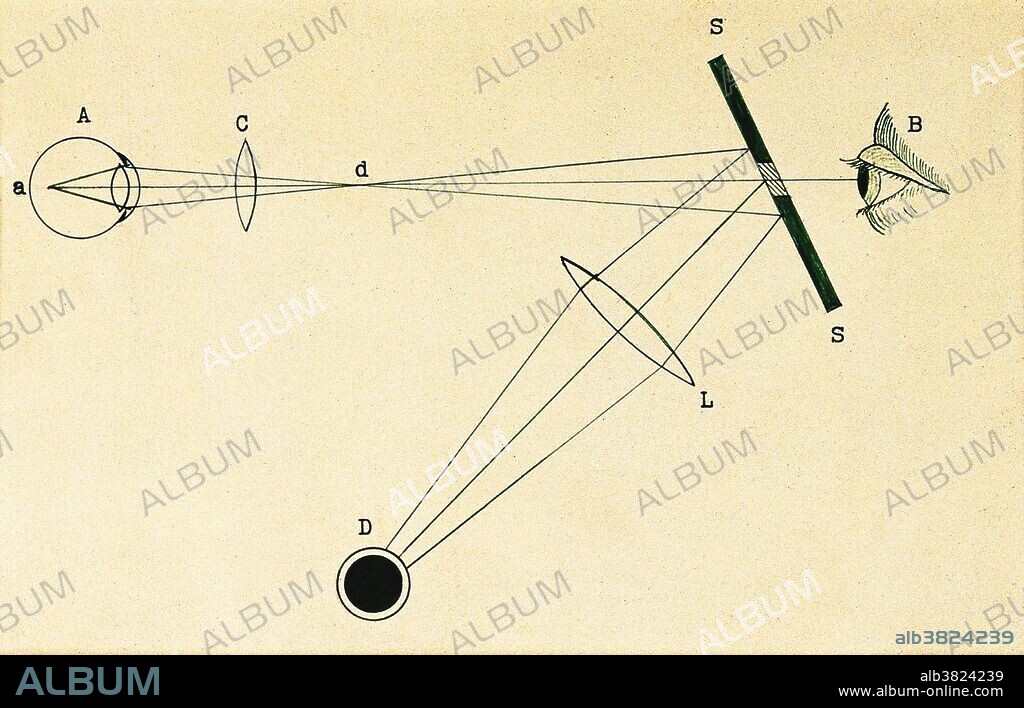alb3824239
Principle of Helmholtz's Ophthalmoscope, 1867

|
Añadir a otro lightbox |
|
Añadir a otro lightbox |



¿Ya tienes cuenta? Iniciar sesión
¿No tienes cuenta? Regístrate
Compra esta imagen

Título:
Principle of Helmholtz's Ophthalmoscope, 1867
Descripción:
Ver traducción automática
A diagram to show the principle of Helmholtz's ophthalmoscope, 1867. The optical arrangement ensured that the retina of the eye was illuminated by an almost parallel beam of light and that the beam of light was not cut off by the observer. A. The eye of the patient. B. The observer. SS. The mirror. L. and C. Lenses for giving an almost parallel beam of light. Hermann von Helmholtz (1821-1894) was a German physician and physicist who made significant contributions in several scientific fields, including the mathematics of the eye, theories of vision, color vision research, and in work on the conservation of energy, electrodynamics, and thermodynamics.
Crédito:
Album / Science Source / Wellcome Images
Autorizaciones:
Modelo: No - Propiedad: No
¿Preguntas relacionadas con los derechos?
¿Preguntas relacionadas con los derechos?
Tamaño imagen:
3600 x 2301 px | 23.7 MB
Tamaño impresión:
30.5 x 19.5 cm | 12.0 x 7.7 in (300 dpi)
Palabras clave:
ALEMAN • ALEMANA • DIAGRAMA • DIBUJO • ESTUDIO • HELMOLTZ • HISTORIA • HISTORICO • ILUSTRACION • OFTALMOLOGIA • OFTALMOSCOPIO • OJO • OJOS • RETINA • RETINAS
 Pinterest
Pinterest Twitter
Twitter Facebook
Facebook Copiar enlace
Copiar enlace Email
Email
